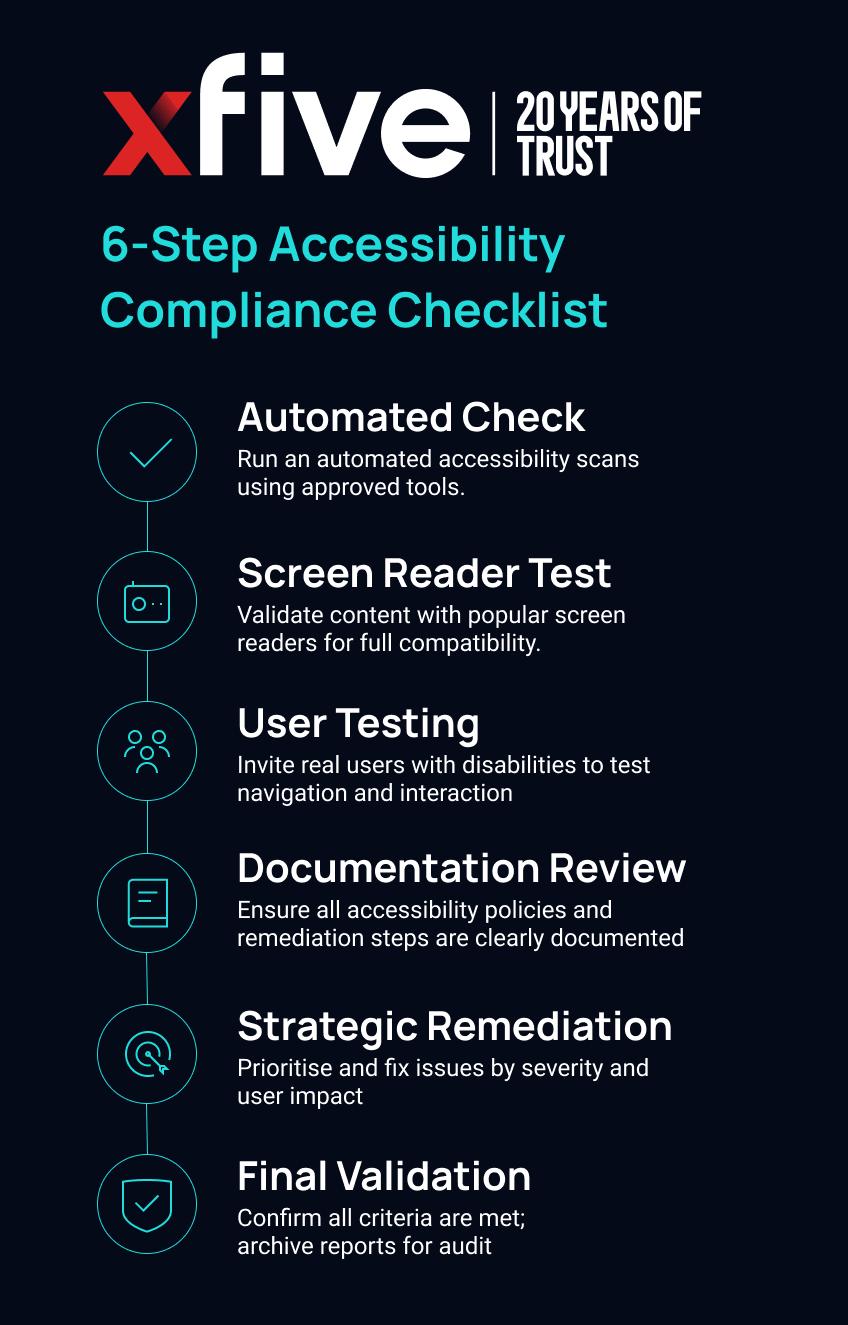With the European Accessibility Act (EAA) enforcement date approaching in June 2025, businesses risk more than fines.

How to Spot Accessibility Gaps — and Fix Them Before the Deadline
With the European Accessibility Act (EAA) enforcement date approaching in June 2025, businesses risk more than fines — they risk excluding users and missing growth:
Is our website compliant?
If you’re unsure — or have a hunch the answer is “not yet” — this guide is for you.
We’ll walk you through a practical, business-friendly approach to diagnosing your site’s accessibility status — and show you how to close the gaps before the deadline.
What does “EAA-compliant” even mean?
The EAA is grounded in technical standards that may sound intimidating at first:
WCAG 2.1 AA: The Web Content Accessibility Guidelines that define how digital content should be perceivable, operable, understandable, and robust.
EN 301 549: The EU-specific standard for ICT accessibility — including software, mobile apps, and websites.
To comply, your website must meet both.
Step-by-step diagnosis checklist

Here’s how to evaluate whether your website meets EAA accessibility requirements:
1. Run an automated accessibility scan
Start with automated tools, like Axe Dev Tools, WAVE by WebAIM and Google Lighthouse that flag common issues.
Look for:
- Missing alt text on images
- Poor color contrast
- Non-descriptive link text (“Click here” is a red flag)
- Empty form labels or buttons
Note: These tools catch about 30–40% of issues, only! They’re useful, but not enough.
2. Test with assistive technologies
Try navigating your site using:
- Scenario 1: A screen reader (e.g., VoiceOver on Mac, NVDA on Windows)
- Scenario 2: A keyboard only (no mouse — just Tab, Enter, and arrow keys)
Can users:
- Understand page structure via headings and landmarks?
- Fill out and submit forms?
- Navigate menus and modals without getting stuck?
These tests reveal if your UI is actually usable by real people with disabilities — not just machines.
3. Check for an accessibility statement
An EAA-compliant website should have:
- A clear accessibility statement
- Contact information for accessibility feedback
- A roadmap or explanation for known issues
This shows both regulators and users that you’re aware, engaged, and improving.
Bonus: The EU Commission offers a model accessibility statement template.
4. Review content, not just the code
Content is often overlooked, but it’s critical for accessibility:
- Use plain language
- Break text into logical sections
- Provide transcripts for video/audio
- Ensure buttons and links clearly describe what they do
Example:
❌ “Learn more”
✅ “Learn more about our accessibility services”
5. Cross-check with EN 301 549
If your product involves software, hardware, or mobile apps, review the EN 301 549 standard.
It includes:
- Software interface requirements
- Documentation accessibility
- Support services accessibility (like chat and help centers)
6. Consider a formal accessibility audit
DIY checks are helpful — but for peace of mind and legal coverage, we recommend:
- A manual accessibility audit from a qualified team
- A VPAT (Voluntary Product Accessibility Template) if you’re selling software to enterprise or public sector clients
How xfive can help?
At xfive, we don’t bolt on accessibility after the fact — we build it into every product from the start. We offer:
- Accessibility audits and reports
- WCAG and EN 301 549 remediation
- Inclusive UX/UI design
- Ongoing accessibility QA
Not sure where your accessibility stands? Let’s fix that — and get you confidently compliant.
Explore our accessibility audit services or get in touch to make your site EAA-ready by June 25, 2025.
EAA Compliance FAQ
What is EAA compliance for websites?
EAA compliance means meeting accessibility standards (WCAG 2.1 AA and EN 301 549) required by the European Accessibility Act.
When does the EAA take effect?
The EAA becomes enforceable in June 2025, affecting digital products sold in the EU.
How can I check if my website is EAA compliant?
Use automated scans, assistive tech tests, and a manual audit. A full checklist is included above.



